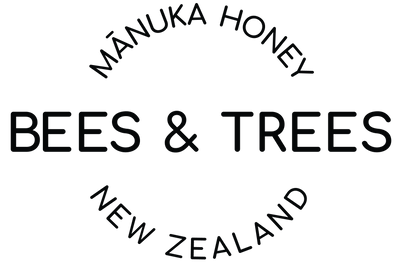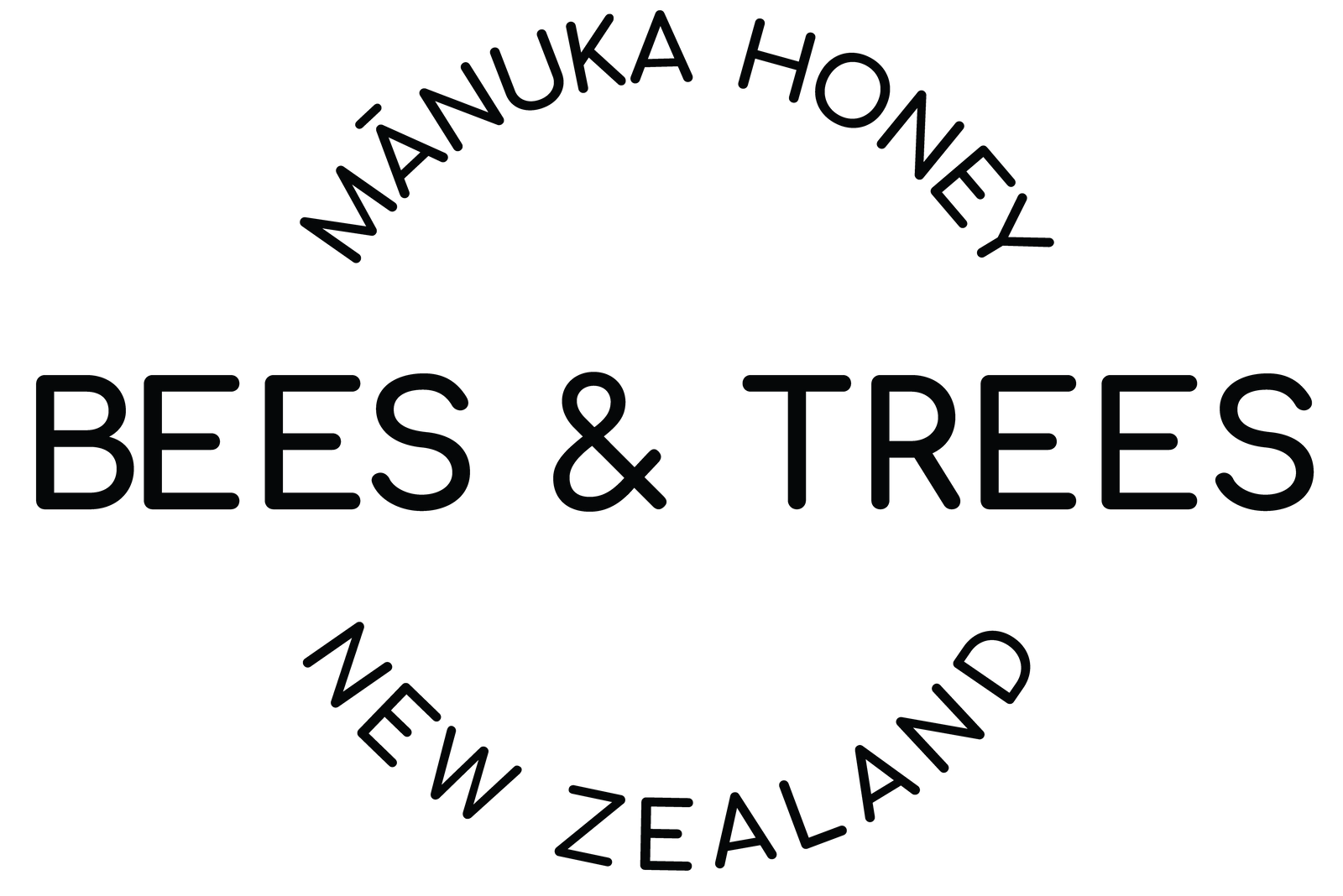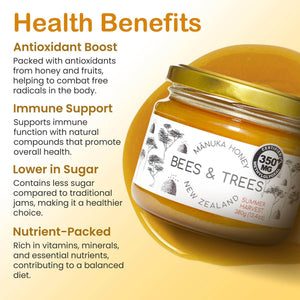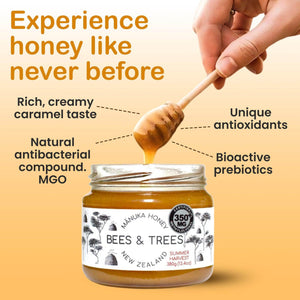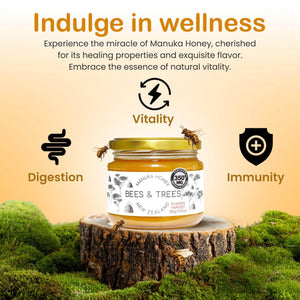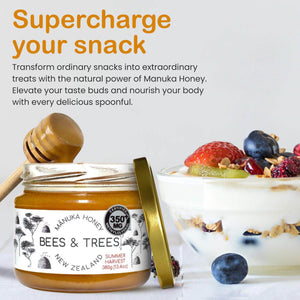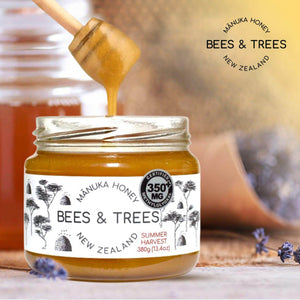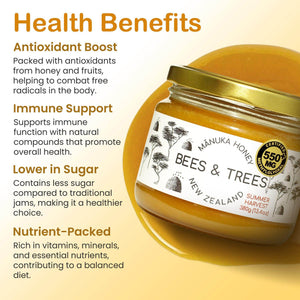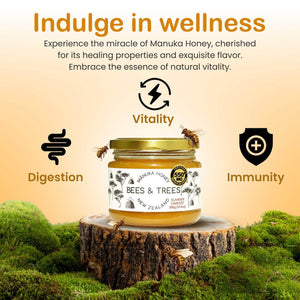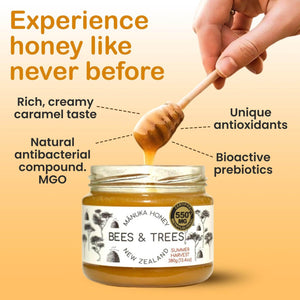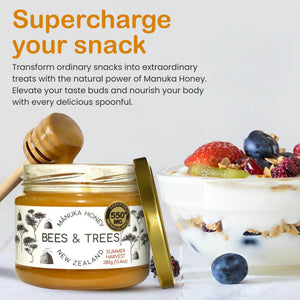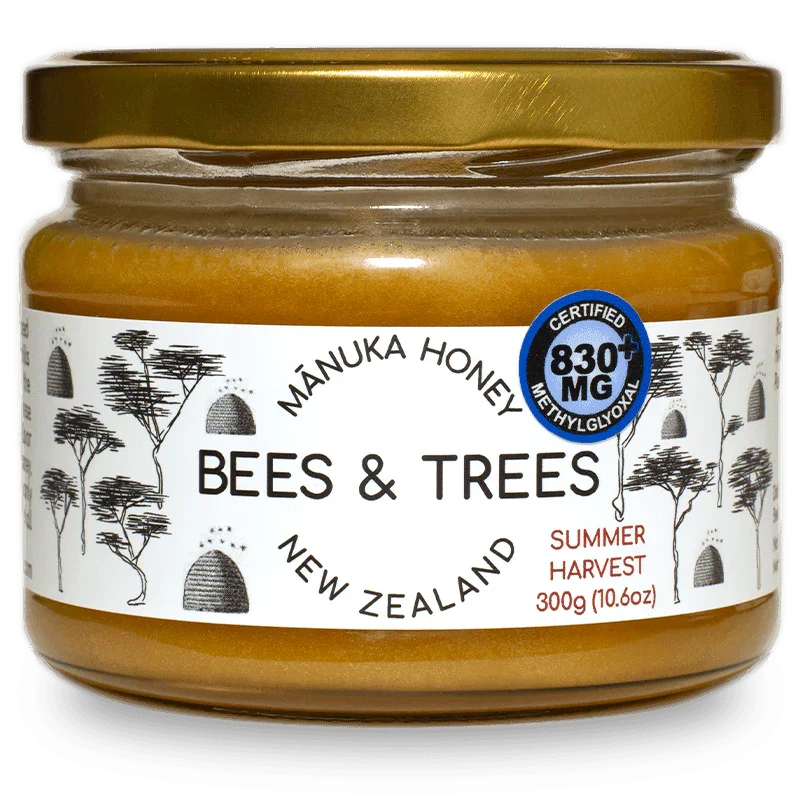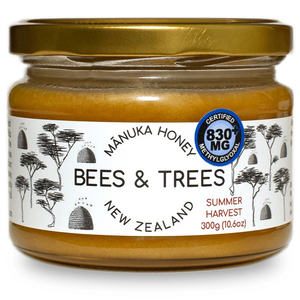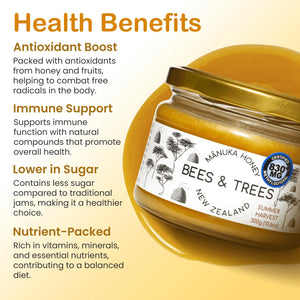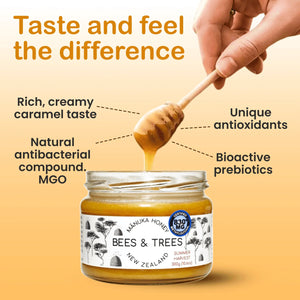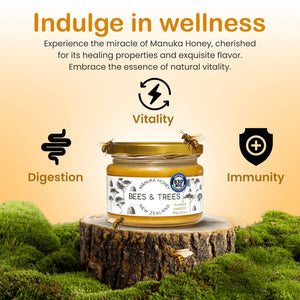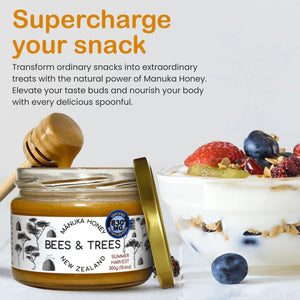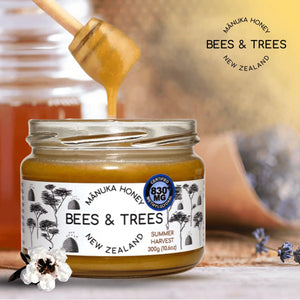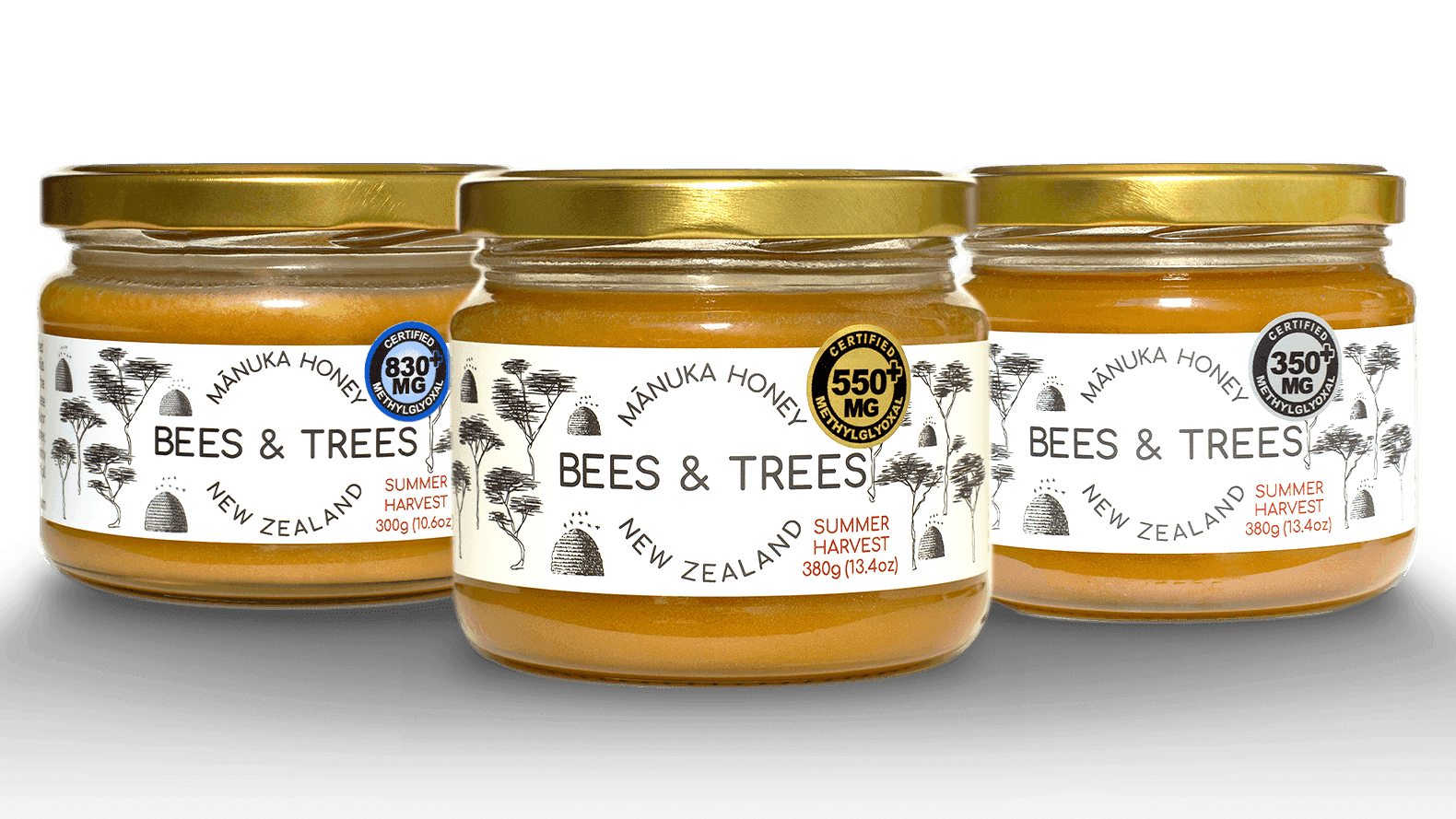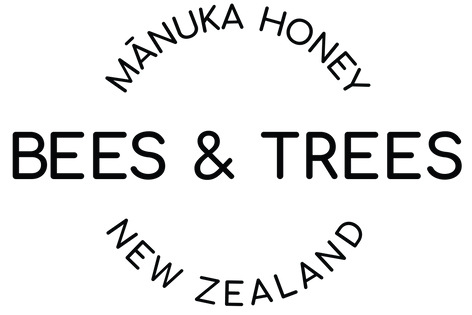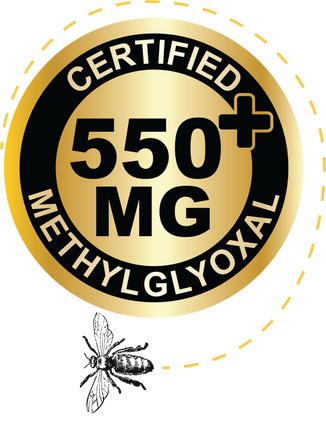
Manuka Honey produced in New Zealand is typically sent to one of two independent labs to be tested for dietary Methylglyoxal (MG or MGO). The value of the honey when sold from producer to packer is directly proportional to this test result. Manuka honey should either be labeled with the actual MG test results (in mg/kg), or with a correlated rating on the UMF (Unique Manuka Factor) scale. The UMF trademark must be on the jar if they are using a UMF rating instead of the actual MG test result. Honey labeled with the UMF logo and rating is also tested for two additional chemical markers (HMF & Leptosperin). The relationship between MG & UMF is as follows (after threshold HMF and Leptosperin levels are met):

Reading The Label
When you see anything else on a label of honey purporting to be Manuka honey, you should steer well clear. Examples of what continues to show up on labels include: “Active”, “Bio-Active”, “Total Activity ”, “K-Factor ” plus a number typically ranging from 5+ to 20+. When labeled this way the company is trying to intentionally mislead the consumer into thinking they are getting a high MG (or legitimate UMF) honey when in reality they are typically getting a very low concentration, or low activity (i.e., low MG value) honey.
Most consumers are shocked to learn that 80% of the purported Manuka honey in the US market employ these misleading labeling tactics. You can shop with confidence with Bees & Trees Manuka honey. We make all of our test reports visible for every batch we produce.
MG Lab Report Example:
Click here for TFNB10 550MG Lab Report
For a more in-depth look at the laboratory testing of Manuka honey, you can read this article by Steve Howse, Analytica Laboratories, published in The “New Zealand Beekeeper”:
DHA and MGO: The Most Common Testing in Manuka Honey
Our Manuka and Other New Zealand Honeys
From Our Bees & Trees to a Jar in Your Home.
Laboratory Certified, Pure Manuka Honey.
(Buy 4 or more jars and save 10%)
Mānuka Honey Mid-Activity 350+ MGO/kg
$33.50
Mānuka Honey 350+ MGO/kg | Pure NZ Honey is ideal for health-conscious consumers seeking natural alternatives to incorporate into their wellness routines. This premium Mānuka...
View full product detailsMānuka Honey High-Activity 550+ MGO/kg
$47.50
Mānuka Honey 550+ MGO/kg | Pure NZ Honey is perfect for those looking to experience the remarkable qualities of authentic Mānuka honey. Known for its...
View full product detailsMānuka Honey Founder's Reserve 830+ MGO/kg
$65.00
Mānuka Honey Founder’s Reserve 830+ MGO/kg | Our Founder’s Reserve Mānuka Honey offers an ultra-high 830+ MGO value, making it ideal for those seeking the...
View full product detailsMānuka Honey 3 Jar Bundle
$130.00
Looking to try each of our different Mānuka Honey offerings? This bundle is the way to go! Our 350+MGO is great for your daily wellness...
View full product detailsNative New Zealand Honey
$15.00
Bees & Trees™ Native Honey | Pure New Zealand Raw Honey is a limited-production honey harvested from New Zealand's untouched native forests. Produced by bees...
View full product detailsManuka Honey Gift Box
$41.00
(Must Be Ordered as a Stand-Alone product, one per order, ships separately)The Gift of Wellness in a Box Discover the rich, golden indulgence of authentic...
View full product detailsCoffee/Tea Mug
$12.00
A Bees & Trees Honey coffee/tea mug. A beautifully modern, white mug. Keeps your favorite beverage warm and reminds you of where your honey comes from!...
View full product detailsAsk Us
Anything
Have questions about Mānuka Honey
or Bees & Trees?
Send us your question and we'll happily respond!
